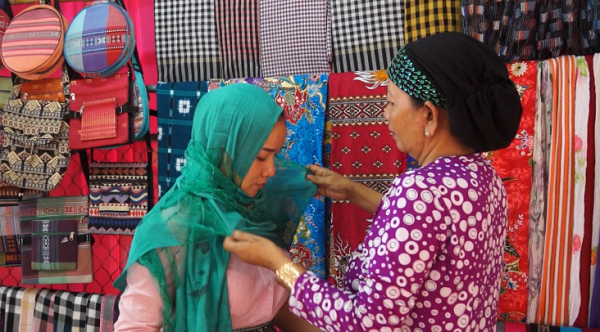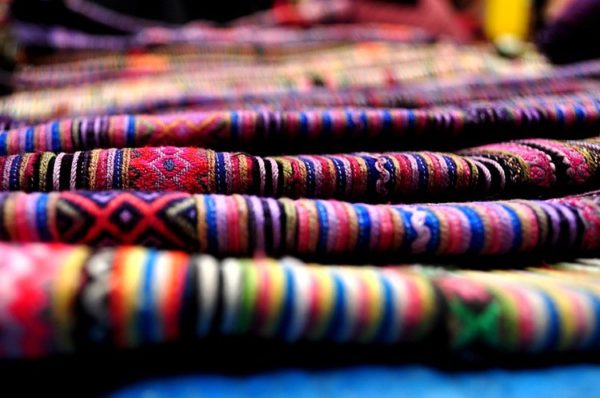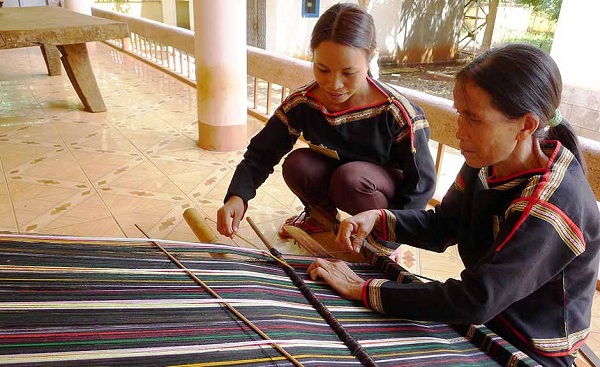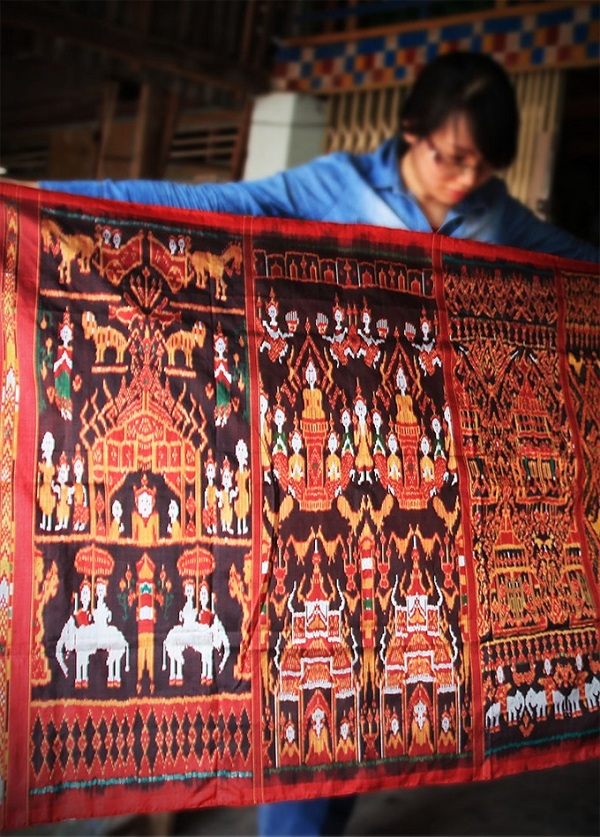Brocade in Vietnam is a type of cloth made of cotton fibers with the fine patterns that you’ve hardly found anywhere else. Van Giao brocade village in An Giang is one of the best places you can go and get the most colorful brocade items.
Also, reaching here means that you have a chance to witness the weaving process done by the skillful hands of Vietnamese craftsmen. By the way, feel free to visit some other villages if you want, like the silk village, carpentry village, or salted fish village for examples.
Van Giao brocade village at a glance
The brocade village lies in Van Giao Commune, Tinh Bien District, An Giang Province of Vietnam. Its brocade represents the true beauty and a rich cultural character of all Khmer people. It’s where 80% of Khmer people live.

Apart from growing rice, selling farm products, raising cattle and producing sugar of the palms, they mainly weave brocade fabrics. The brocade is also known as the Khmer silk since it’s a unique product of them for hundreds of years. It’s not just gorgeous from the outside but it also symbolizes the special quintessence of the entire group.
-
History and development of brocade village
The village has been renowned for its big career of raising silkworms, weaving silk, and growing mulberry for a long period.
In other words, each of the households in this place owns one loom and one spinning wheel for producing silk, which has to run all day long. In several houses in the village, aside from the altars of their ancestors, the locals also have the altars of the forefather of this traditional weaving job.
Once the war took place in the southwest border of Vietnam since 1978. The villagers must reach Soc Trang, Bac Lieu, Tra Vinh, and so on. Around that time, the silk weaving job was nearly deleted. After the end of the war, this village tends to turn gloomier, and the market for brocade won’t exist anymore. For that reason, the brocade weaving job was at risk of being forgotten.
-
About Van Giao brocade

Several years later, the brocade of Van Giao village was exported to Cambodia under the name “Khmer silk”. Next, the international Care organization in our country launched a project of Rehabilitating and Developing Program to grow the conventional career of weaving job of Khmer people in Van Giao village.
By looking straight into Van Giao brocade, it’s easy to spot how it owns multiform pattern with delicate color. Weavers will mix their traditional method with their modern techniques to make the perfect product. For the dyeing technique used by Van Giao local villagers, it’s mostly natural dyes.
Doing so can help make the whole cloth look shining, tender and fast at the same time. For the shawls, local people would weave three specific layers of cotton fibers with three distant shades. Once looking at it closely, you can see the blue one. But if looking from the left side, you can see the orange one.
Then how about staring at it from the right side? It’s going to be red. When it comes to the brocade tablecloth, their weaving skill needs to be much harder since patterns must depend on the fairy tales.
What to see in Van Giao Brocade village?
Most Khmer women tend to use this material to make their wedding dresses and elegant clothes to put on when being in pagodas. Also, brocade is availed to adorn many sites to worship or use as the towels to wear on heads.
As you know, by the time they try to dye the brocade, the weavers must picture that the patterns they would weave on their products beforehand. Next, the silk fibers are hung on the columns of their houses to mix all colors. There’s a mark on those fibers so that they can base on to weave. Then, they utilize many pieces of nylon to wrap the tight into parts.

Silk dying activity will be thought to be the hardest and most time-consuming job that might take you months to finish. But the weaving stage is more challenging and more complex than ever. How come? It’s because they utilize a fine skill of 3-layer weaving by using three various shades of red, orange, and green.
Thus, Van Giao brocade can alter its shade once you view it from different angles. Besides, all brocade fabrics availed for painting or cloth would require more sophisticated skills since they tend to own more patterns.

In traditional brocade outfits, women would look more beautiful than wearing casual clothes. Nowadays, Van Giao brocade is exported to a lot of foreign countries, from Australia, USA, France, to Cambodia and Thailand.
Van Giao Brocade receives attention and investment by local authorities
To extend the market, every brocade product is displayed at Vietnam Museum of Ethnology and several other tourist sites in Saigon, Danang, Nha Trang, and Ba Ria – Vung Tau. It aims to the international markets, including Germany, the US, and Cambodia.
The weaving job for Van Giao brocade is quite light and suitable for middle and old-aged women. Until today, it has appealed the participation of 70 households with 143 members.
Most brocade articles are sold at a price of 200,000 – 3 million VND (equivalent to 9.4 USD and 141 USD). It doesn’t just add a monthly income of 2 million VND for each member but also help them stay away from poverty. This also helps them preserve their traditional and cultural traits.
For Van Giao brocade, it attained a few awards from the Ministry of Agriculture and Rural Development right at the Vietnam Craft Village Fair. Besides, the industry won a prize at the 4th ASEAN Traditional Textile Symposium in Thai Nguyen Province.



